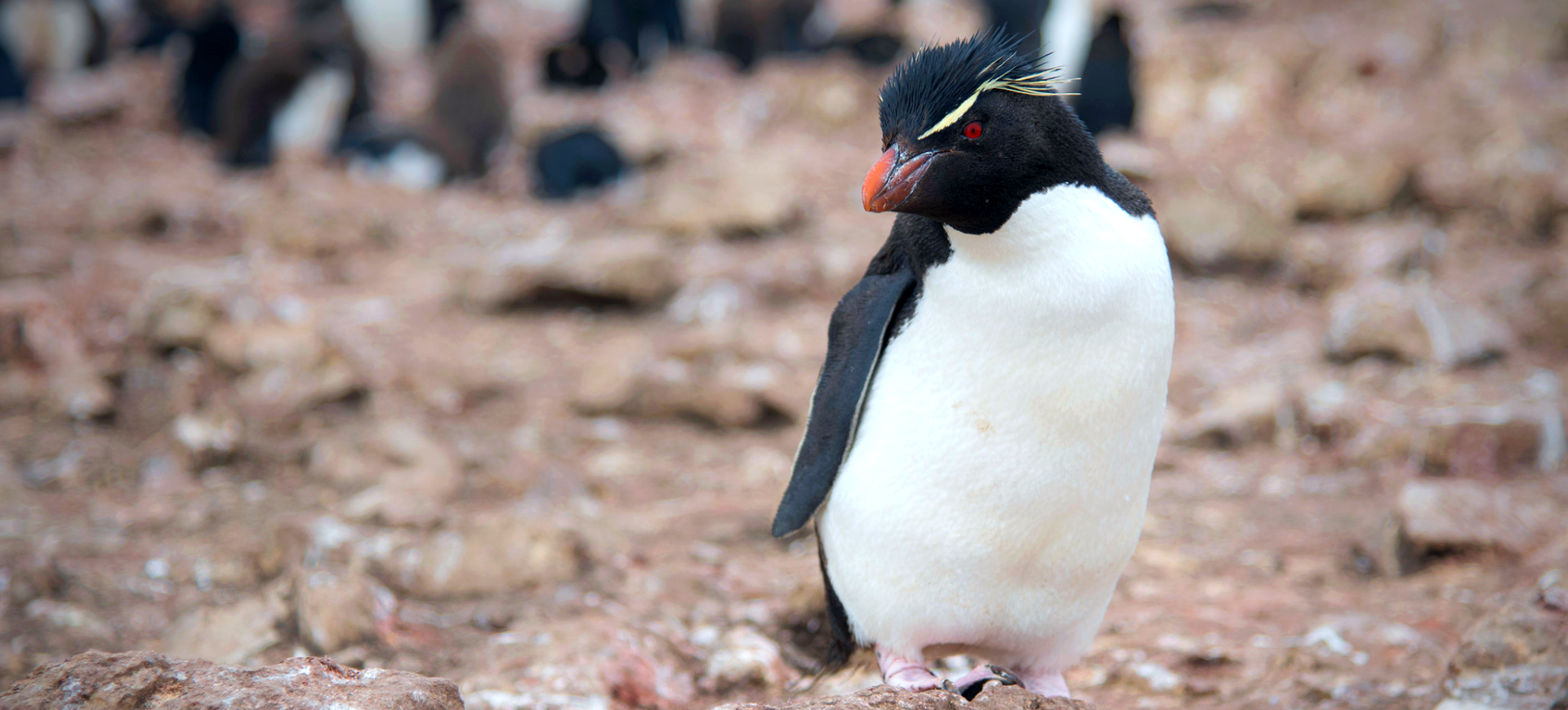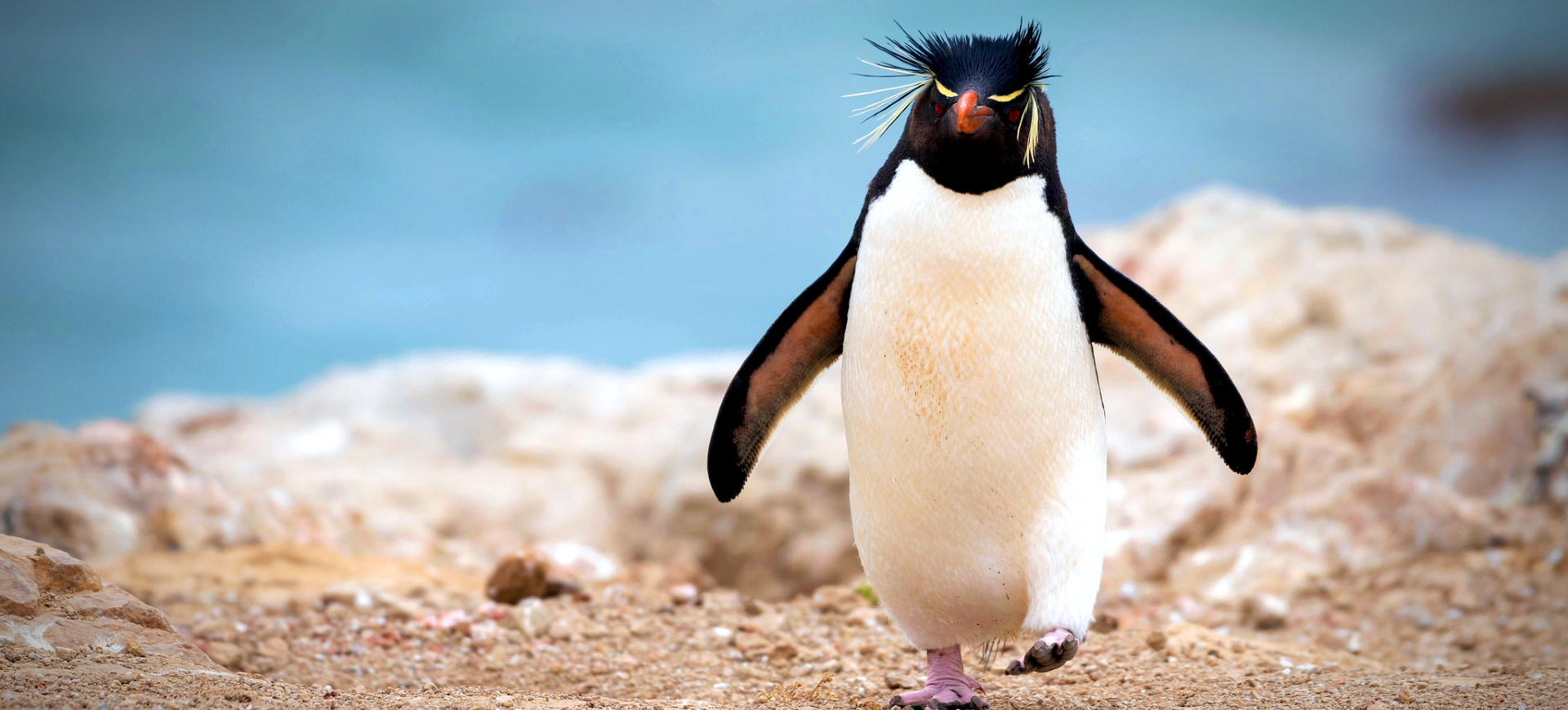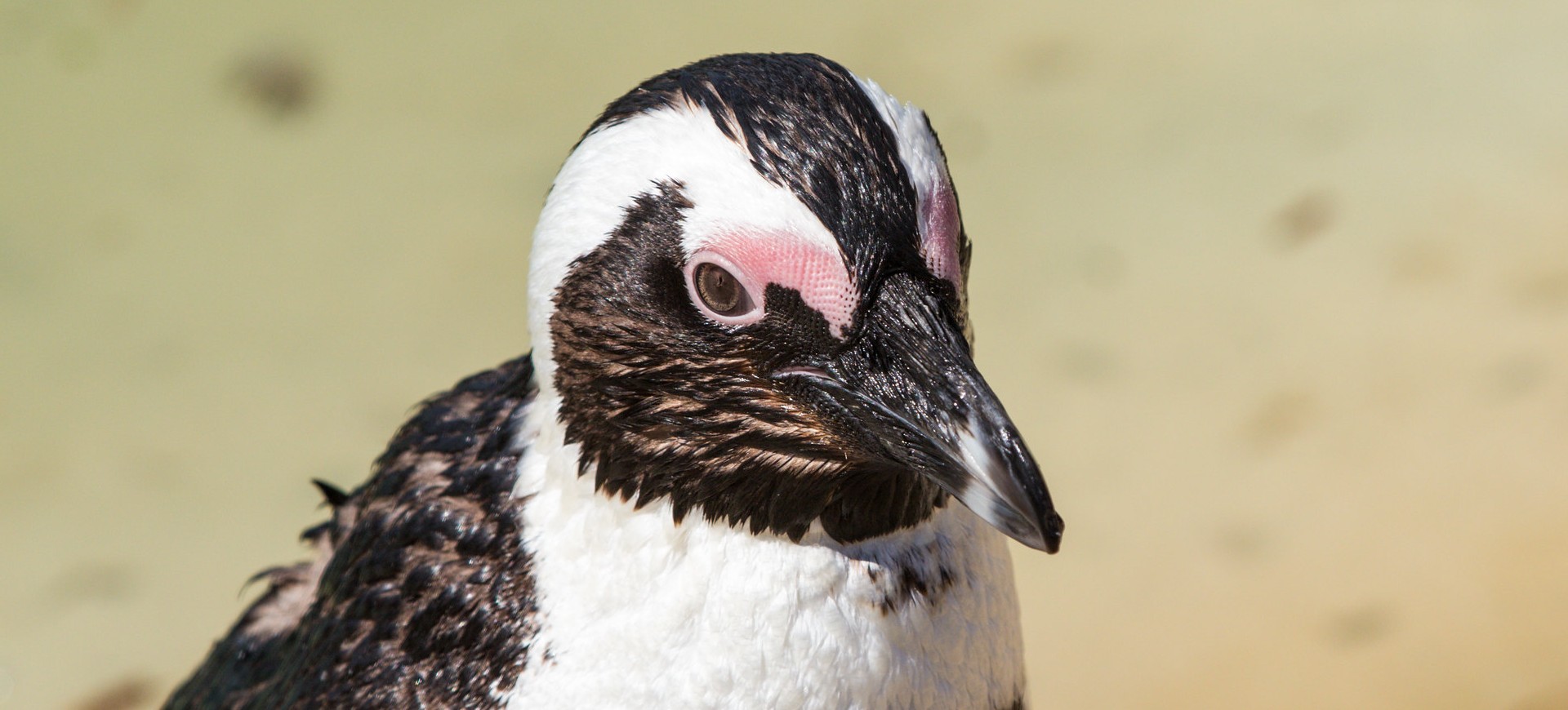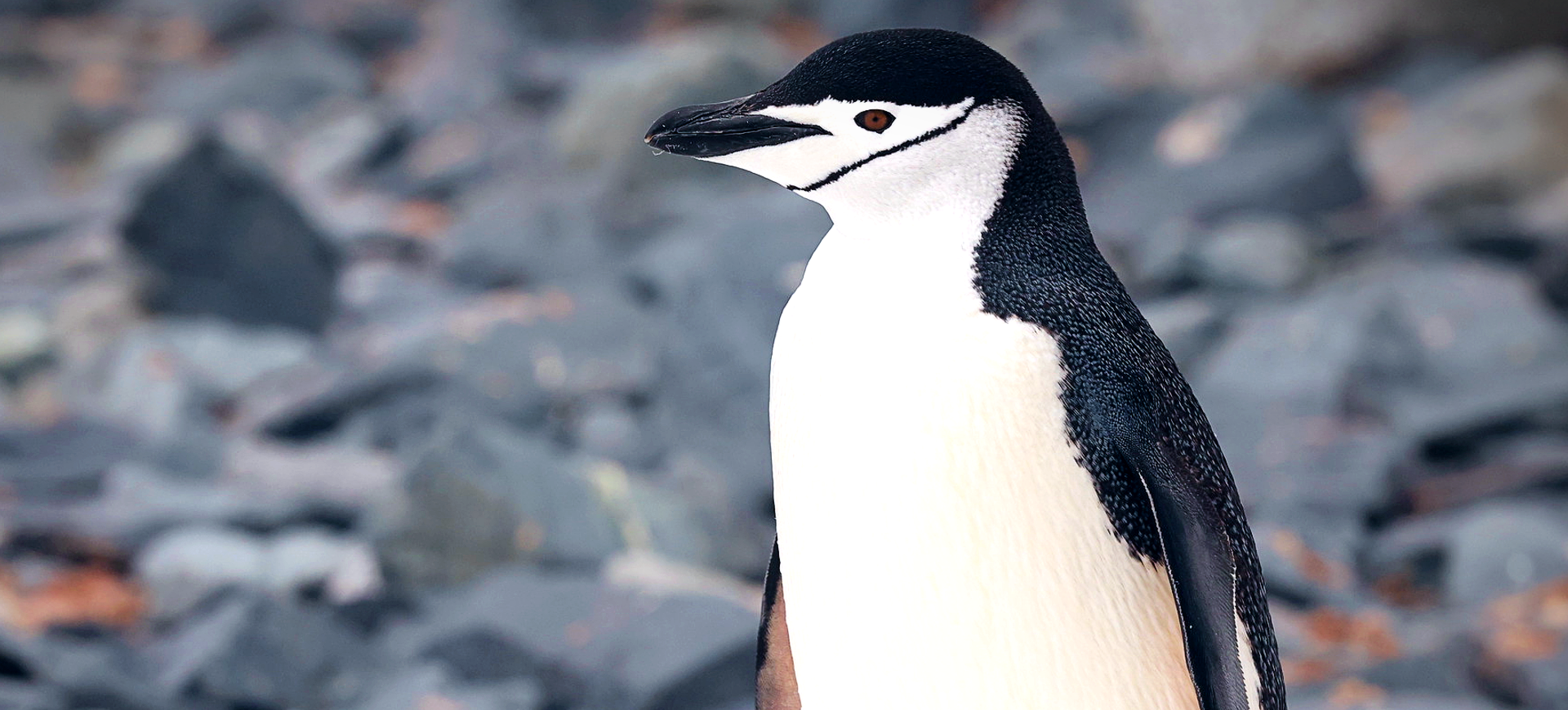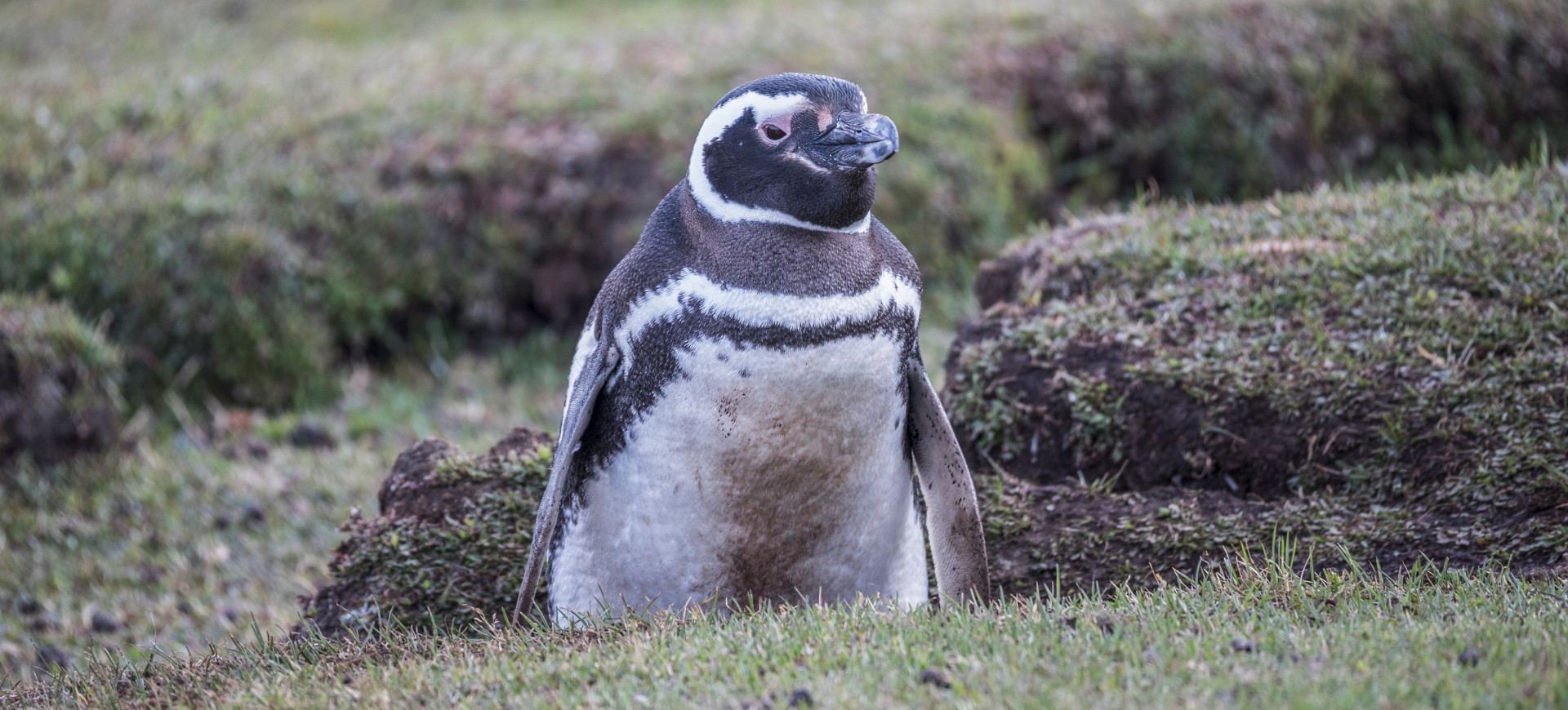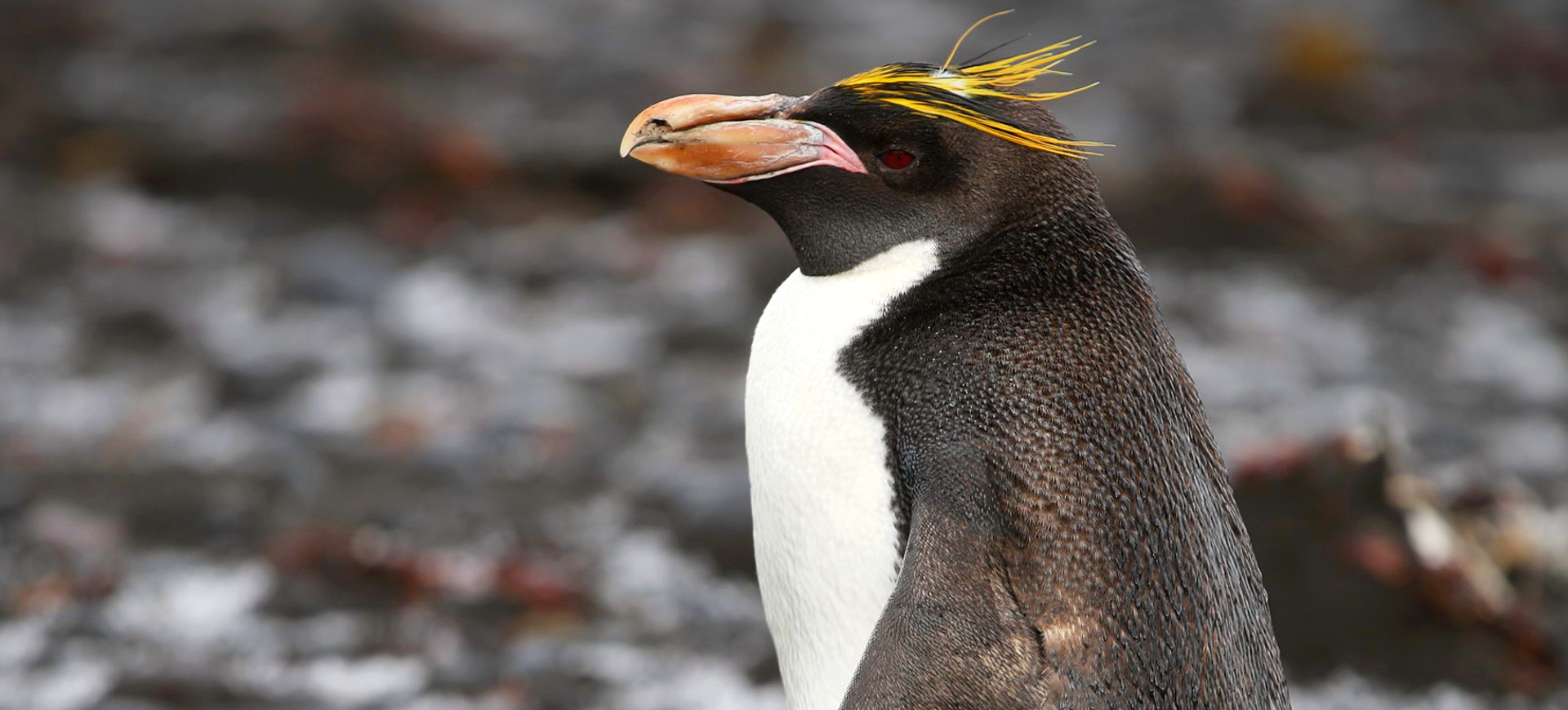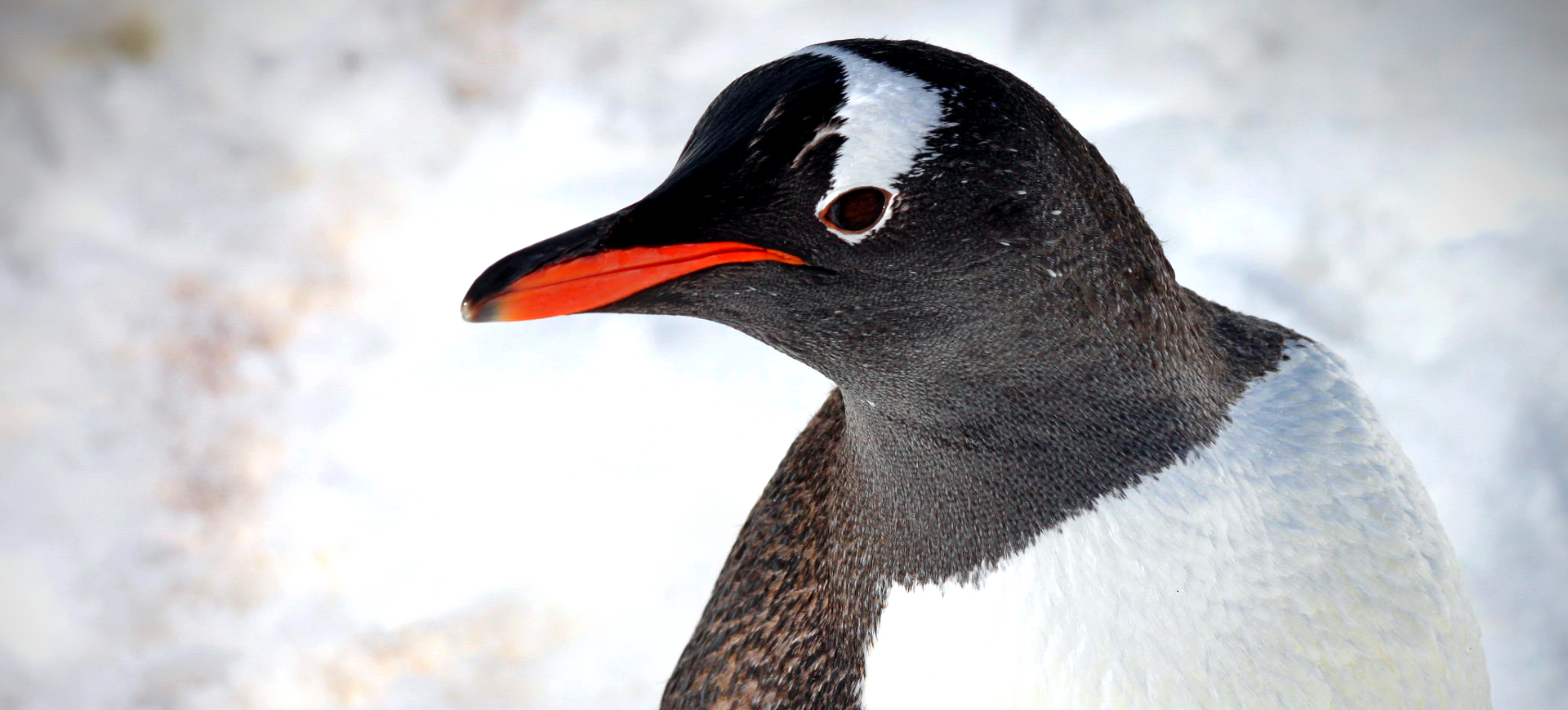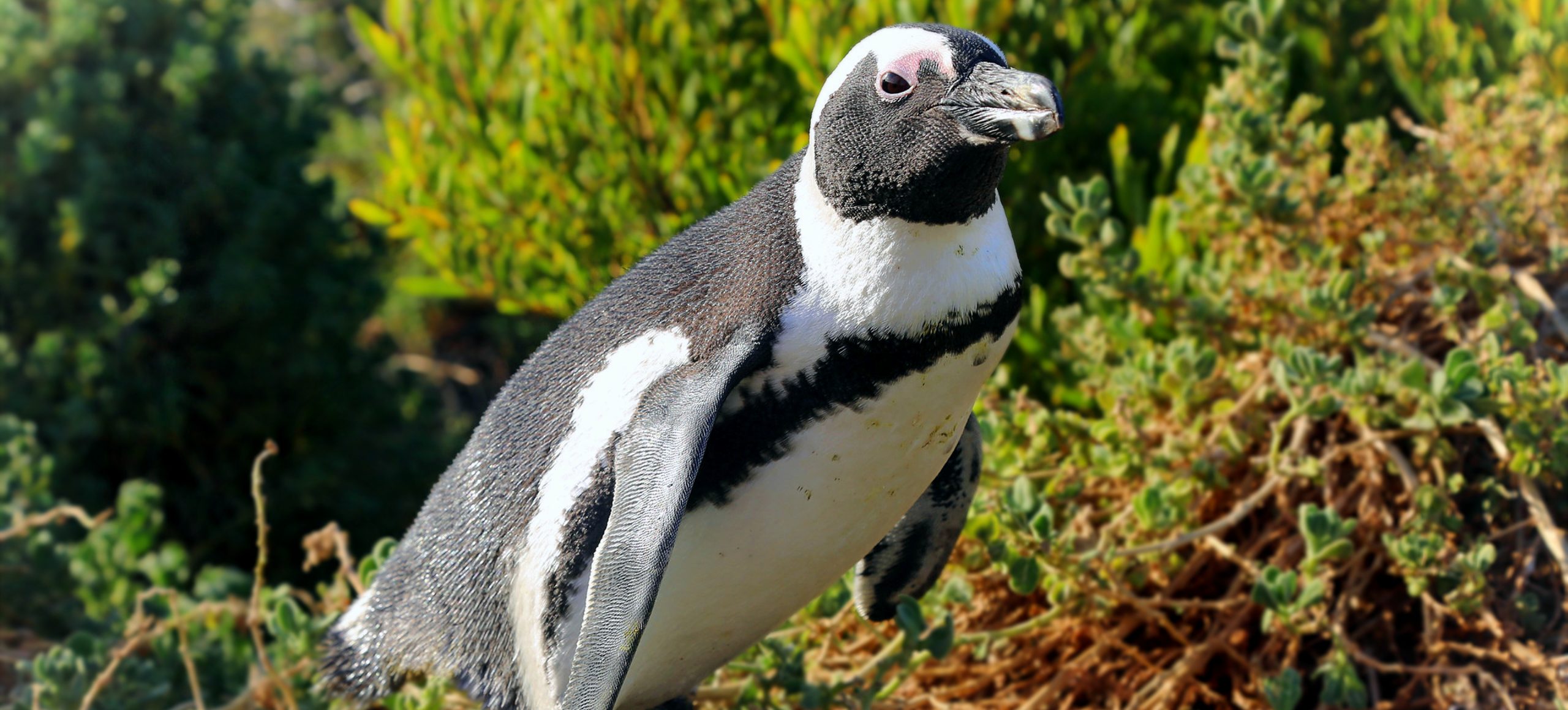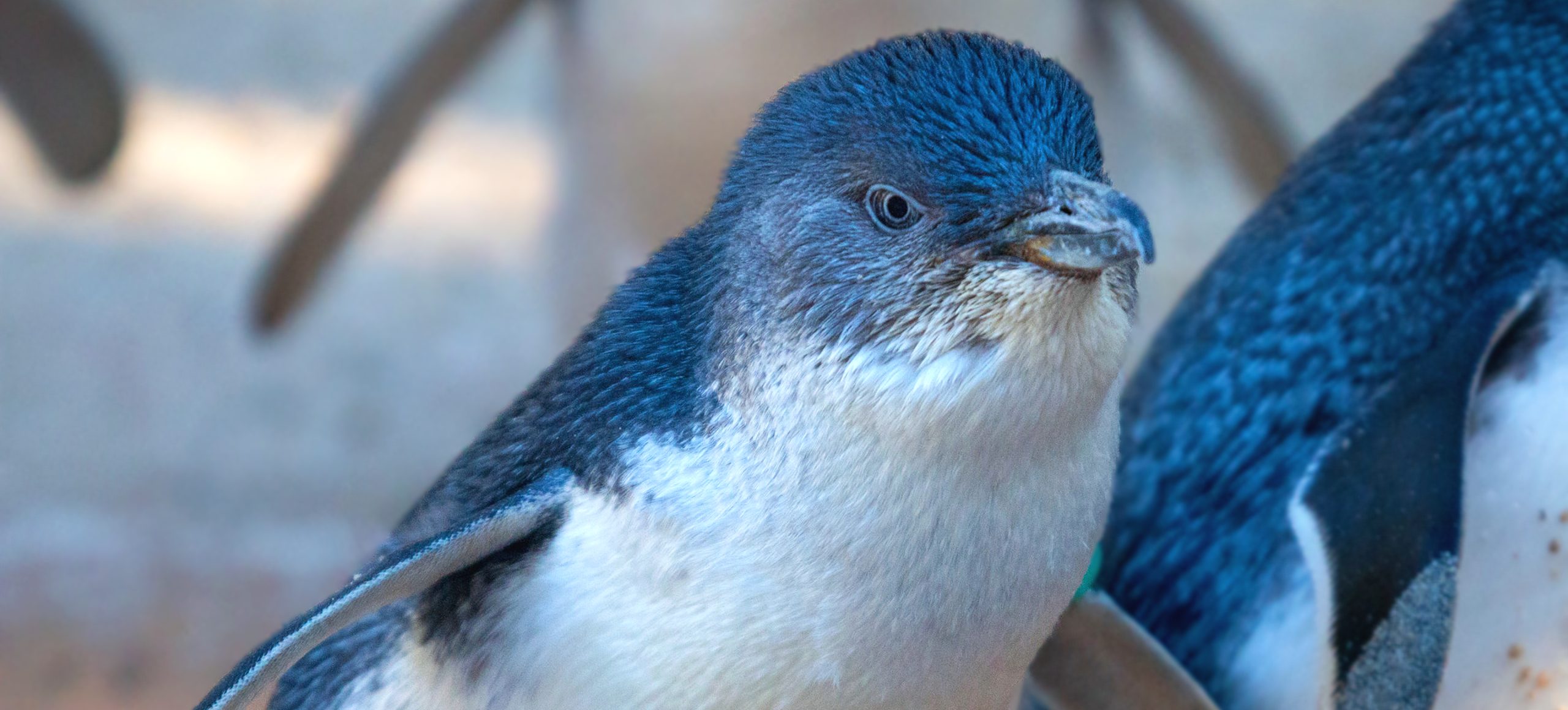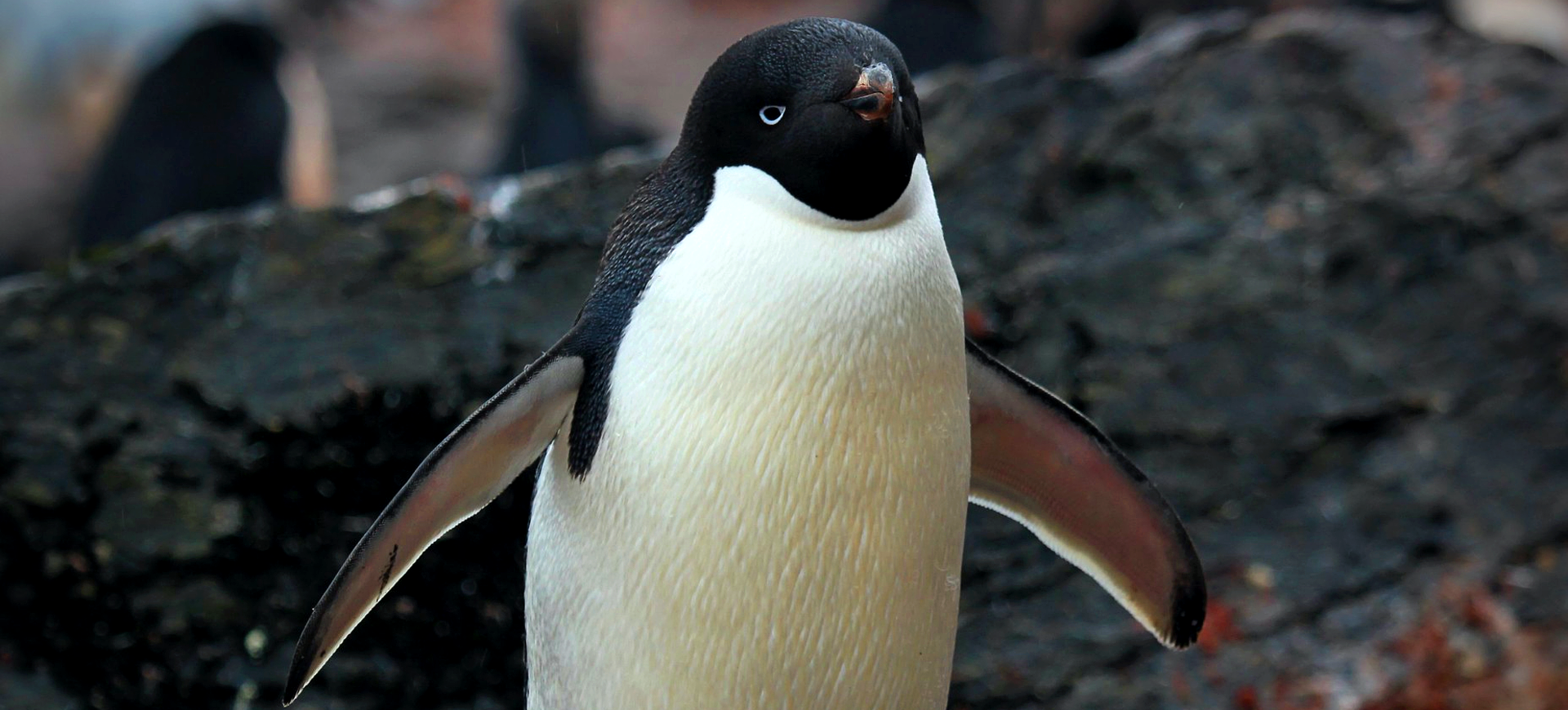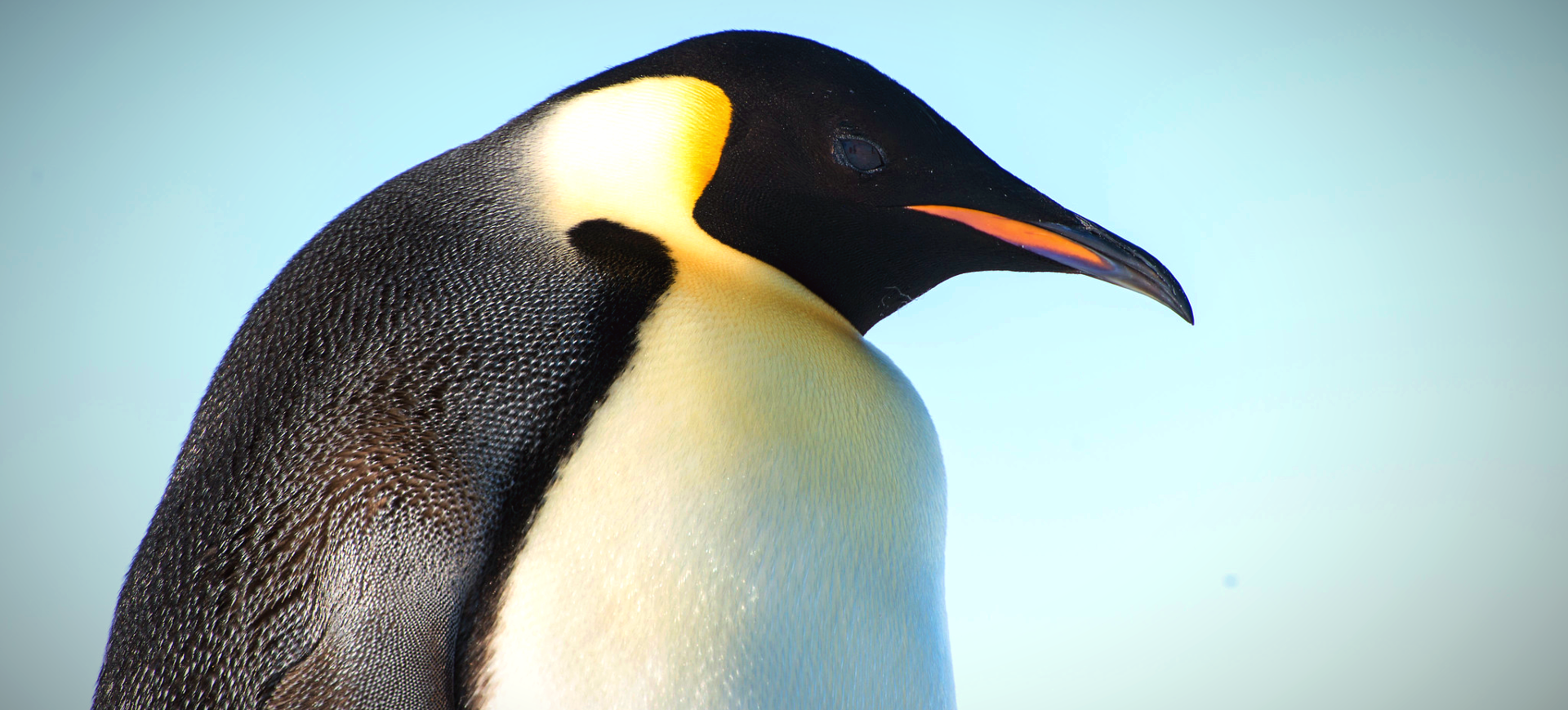Overview
The King Penguin is the second-largest species of penguin, native to the sub-Antarctic islands and the waters of the Antarctic. Known for its striking appearance, it has a broad cheek patch of vivid orange and a sophisticated layer of waterproof and insulating feathers. Unlike other penguin species that build nests, the King Penguin incubates its single egg on its feet under a flap of abdominal skin called a brood pouch.
This species is highly adapted to life in the water. Their bodies are streamlined to reduce drag while swimming and their strong flippers are used for propulsion. King Penguins can dive to depths of over 300 meters to forage for food, primarily small fish and squid. They are known for their endurance and can travel great distances for food.
King Penguins are social animals that live in large colonies. These colonies can sometimes number in the tens of thousands. They have complex social behaviors and communicate using a variety of vocalizations and body movements. The species is monogamous for a single breeding season but may change partners in other seasons.
Taxonomy
Kingdom
Phylum
Class
Order
Family
Genus
Species
Type
Physical Description:
The King Penguin stands out for its large size and vibrant coloration. They have a white belly, a slate-grey back, and vivid orange markings on their head and neck. The species also has a long, straight, slender, robust bill adapted for catching slippery prey like fish and squid. Their eyes are dark brown, almost black, providing them with excellent vision both above and below water.
Sexual dimorphism in King Penguins is minimal, with males slightly larger and heavier than females. Both sexes have a similar appearance, making it challenging to distinguish between them based solely on physical characteristics. Their flippers are long and narrow, adapted for efficient swimming rather than flight. The King Penguin’s legs are set far back on the body, making their walking gait somewhat awkward but aiding in streamlined swimming.

Lifespan: Wild: ~20 years || Captivity: ~30 years

Weight: Male: 26–35 lbs (12–16 kg) || Female: 25–33 lbs (11–15 kg)

Height: Male: 35–39 inches (89–99 cm) || Female: 33–37 inches (84–94 cm)

Wingspan: Male & Female: 28–39 inches (71–99 cm)

Top Speed: 7.5 mph (12 km/h)
Characteristic:
Native Habitat:
King Penguins are native to the sub-Antarctic islands and the fringes of the Antarctic continent. They prefer ice-free areas, including coastal plains, sheltered valleys, and cliffs. These habitats offer them easy access to the ocean, where they spend considerable time foraging for food. Unlike some other penguin species, King Penguins do not build nests and instead incubate their eggs on their feet.
The colonies are often located near shallow waters, which provide abundant food resources. However, King Penguins are willing to travel long distances for foraging, often covering hundreds of kilometers. They are well-adapted to cold temperatures but prefer milder conditions than other penguin species like the Emperor Penguin.
Biomes:
WWF Biomes:
Biogeographical Realms:
Continents:
Countries:
Diet:
Diet & Feeding Habits:
King Penguins feed on small fish and squid, which they catch during deep dives. They are known for their remarkable diving abilities, capable of reaching depths over 300 meters. They use their keen eyesight and agile bodies to capture prey during these dives. They can stay submerged for up to 5 minutes but usually complete their dives in a shorter period.
The foraging trips can last several weeks and often cover great distances. King Penguins have a highly developed sense of navigation, which allows them to return to their specific colony after long periods at sea. They also engage in cooperative hunting, where penguins work together to herd fish into dense schools before feasting.
Mating Behavior:
Mating Description:
King Penguins are monogamous for a single breeding season but may change partners in other seasons. The courtship process involves elaborate displays and vocalizations. Once a pair is formed, the female lays a single egg, which both parents take turns incubating on their feet under the brood pouch, a specialized flap of skin.
The incubation lasts around 55 days, after which the chick is born. Both parents share the responsibility of feeding and keeping the chick warm. The chick goes through a brown, downy plumage phase before molting into waterproof feathers. The young are cared for in creches, or groups, watched over by a few adults, while other parents go to forage.
Reproduction Season:
Birth Type:
Pregnancy Duration:
Female Name:
Male Name:
Baby Name:
Social Structure Description:
King Penguins live in large colonies that can number in the tens of thousands. These colonies have complex social structures, with hierarchies based on age and experience. Communication is vital and facilitated through various vocalizations and body movements. The social structure becomes more rigid during the breeding season, with established territories around each breeding pair.
Outside the breeding season, King Penguins often form smaller groups for foraging. These groups can be quite fluid, with individuals frequently joining or leaving. Social bonds are strong, particularly between breeding pairs, who share the responsibilities of incubation and chick-rearing. Mutual preening is a common social behavior, strengthening social bonds and maintaining feather conditions.
Groups:
Conservation Status:
Population Trend:
The King Penguin population is currently stable, with an estimated 2.2 million individuals in the wild. They are primarily concentrated in a few large colonies on sub-Antarctic islands. These colonies can number in the tens of thousands and are vital for the species’ social structure and breeding success.
Despite their current stability, King Penguins face threats from climate change, which could affect their food supply and habitat. Changes in sea temperature and currents can lead to shifts in the distribution of prey species, making foraging more challenging and potentially leading to decreased reproductive success.
Population Threats:
One of the primary threats to King Penguins is climate change, which can affect the availability and distribution of their primary food sources. Warmer ocean temperatures may also lead to a loss of suitable foraging areas. Additionally, they are at risk from human activities such as fishing, which can lead to accidental bycatch.
Pollution is another concern, particularly oil spills, which can devastate King Penguin colonies. Plastic pollution is also risky, as the birds may ingest plastic particles, mistaking them for food. While currently not causing a significant decline, these threats have the potential to impact the population adversely in the long term.
Conservation Efforts:
Conservation efforts for the King Penguin primarily focus on habitat protection and monitoring. Many of their breeding sites are in protected areas, which helps safeguard the species from direct human interference. Research is ongoing to understand the potential impacts of climate change on their food supply and distribution.
Public awareness campaigns aim to educate people about conserving this charismatic species. These are often coupled with efforts to minimize human impact, such as responsible fishing practices to reduce bycatch and initiatives to clean up ocean pollution. Monitoring programs track population trends and health, providing data that guide conservation strategies.
Additional Resources:
Fun Facts
- King Penguins are the second-largest penguin species.
- They can dive to depths of over 300 meters.
- King Penguins do not build nests; they incubate their eggs on their feet.
- They have a specialized blood vessel structure in their wings to conserve heat.
- The species can go for several weeks without eating while incubating.
- King Penguins have been observed “singing” to their eggs.
- They are strong swimmers and can cover great distances in search of food.
- King Penguins have a keen sense of direction and can navigate back to their specific colony after long foraging trips.
- They are one of the few bird species that molt twice a year.
- King Penguins have a unique “catastrophic molt,” where they shed all their feathers once before growing a new set.









